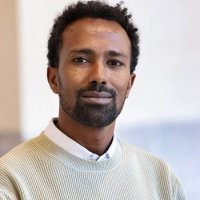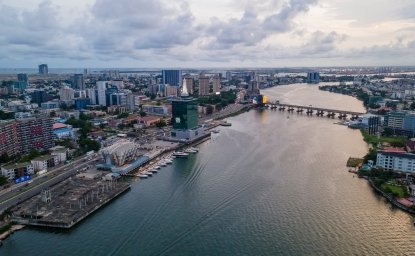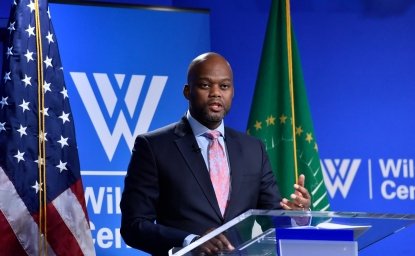Religious Institutions, Conflict, and Peacebuilding in Ethiopia



Religion has been a factor in violent conflict for thousands of years. Only recently has it been viewed as an instrument of peace, too.
There are various cases in Africa where religion has been used to end wars and promote sustainable peace and stability. Some of the more prominent examples in recent decades have been the Quakers during the Nigerian Civil War (1967-70), the All-Africa Conference of Churches, and the World Council of Churches in mediating the conflict between the government of Sudan and Southern Sudanese liberation movements, which eventually resulted in the negotiated independence of South Sudan in 2011; the Rome-based Community of St. Egidio which has contributed to several peacebuilding efforts in Africa, notably in Mozambique; Archbishop Desmond Tutu's celebrated role in fighting for peace in South Africa and reconciling racial groups in the aftermath of apartheid; and the Inter-Religious Council of Sierra Leone.1
Ethiopia has a long history of violent conflict. The Tigray War (2020-2022) and the ongoing armed conflicts in Amhara and Oromia regions are only the latest chapters. Efforts to end the violence and instability that affect large parts of the country have been largely state-driven and not effective enough to bring lasting peace. This research paper examines the peacebuilding role of religious institutions during a time when conflict was ongoing and religious actors were instruments of reconciliation for the conflicting parties. It draws on fieldwork in Northern Ethiopia, a region that was engulfed by war between 2020 and 2022, on the role of the Ethiopian Orthodox Church in three conflict-riven towns: Lalibela, a world heritage site with 12th-century rock-hewn churches, Sekota, and Woldiya. The Ethiopian Orthodox Church is deeply embedded in North Ethiopian society, with roots dating back to the 4th century CE. More than 90% of the region's inhabitants are followers of the Church.2
The roles religious institutions played in these settings included humanitarian relief, financial support, and psycho-social assistance to affected communities, as well as mediation efforts and the management of public services such as health, water, and energy provision.
According to Jonathan Fox, a scholar of politics and religion at Bar-Ilan University, there are four basic functions of religion in society: providing a meaningful framework for understanding the world; setting rules and standards of behavior; organizing adherents through institutions; and legitimating actors, actions, and institutions.3 When conflict enters the frame, religion is viewed by many as a causal factor. Monica Toft has identified religion as either a "central or peripheral issue" in 42 civil wars from 1940-2000.4 Other scholars, however, argue that it is more complex, having a dualistic role. Scott Appleby's The Ambivalence of the Sacred: Religion, Violence, and Reconciliation points to religion as both an instrument to legitimize certain acts of violence on the one hand and limit the frequency and scope of these acts on the other.5 As a subject of scholarly and practical inquiry, the role of religion in fostering peace is growing in significance at universities and think tanks.6
There are many compelling factors for the use of religion and its institutions in peacebuilding. First, as John Paul Lederach has argued, these institutions are "located in and on all sides of the conflict, and their primary arena of activity -- that of the spiritual, emotional, and relational wellbeing of people -- lies at the heart of the contemporary conflict."7 Second, they are endowed with credibility, trust, and moral authority by the people.8 In Africa, religion plays a substantial role both in private and public life. Indeed, religion is widely seen as a problem-solving tool in the everyday life of Africans, so it is not surprising that it has come to serve multiple functions in peacebuilding.9
There are a number of ways in which religious actors can engage in and contribute to peacebuilding in Africa. These include diplomatic mediation, social and humanitarian services, inter-faith peacebuilding initiatives, and education for peace.10 Religious actors can additionally facilitate post-conflict reconciliation and provide emotional and spiritual support to war-affected communities.11
It is also worth noting that the emergence of religious institutions as key actors overlaps with the "local turn" in the peacebuilding field, which focuses on "the agency of local actors, the dynamics of the every day in conflict-affected contexts, and the durability of domestic social and cultural traditions for peacebuilding."12
In April 2018, Ethiopia underwent a political transition following widespread anti-government protests, mainly in the Oromia and Amhara regions of the country. A new government under Prime Minister Abiy Ahmed assumed power on the back of high hopes that Ethiopia would put its conflict-ridden past behind it. However, the post-2018 period has been marred by the presence of violent conflict in different parts of the country. According to Armed Conflict Location and Events Data (ACLED), there were a total of 7,485 violent events in Ethiopia from April 2018 to the end of November 2023.13
In November 2020, a war broke out in the Tigray region between the federal government of Ethiopia and the Tigray People's Liberation Front (TPLF). The war expanded to the Amhara and Afar regions between July and December 2021. Then labeled as the world's deadliest conflict, the war resulted in many deaths and human rights violations.14 The war formally ended with an agreement signed between the government of Ethiopia and the TPLF in Pretoria, South Africa, in November 2022. Peace in the region, however, remains fragile, with tensions recently escalating between different factions of the TPLF.15
Another episode of violence in contemporary Ethiopia has been the ongoing armed conflict in the Amhara region between the government and Fano, an ethno-national armed group. The conflict intensified in August 2023 when the federal government declared a state of emergency as Fano groups launched offensives in several towns in Amhara, including Bahir Dar, Gondar, and Lalibela.16
In the Oromia region, despite an agreement signed in 2018 between the government and the Oromo Liberation Front (OLF) in Asmara, Eritrea, conflict erupted when a splinter group—the Oromo Liberation Army (OLA)—began an insurgency campaign in 2019.
The various initiatives aimed at addressing Ethiopia's multi-faceted conflicts have brought a mix of relative stability, optimism, and skepticism. While the Pretoria Agreement has brought a ceasefire to the Tigray region, the two rounds of peace talks between the government of Ethiopia and the Oromo Liberation Army have not resulted in an agreement to end hostilities in the Oromia region.17 Similarly, in the Amhara conflict, the regional 15-member peace council established in June 2024 has been equally unable to facilitate productive negotiations between the government and Fano groups. The council has been accused from the outset of lacking impartiality and a clear plan of action to stop the fighting.18
The Ethiopian National Dialogue Commission was established at the end of 2021 to promote "broad-based inclusive public dialogues on fundamental issues in the country that endanger national consensus."19 However, the commission has drawn criticism over its alleged lack of legitimacy, inclusivity, and transparency.20
There is hope that the Transitional Justice Policy, adopted in April 2024, will contribute significantly to peacebuilding efforts in Ethiopia. How it will be operationalized, though, remains to be seen.
Ethiopia is a multi-faith state. The religious landscape in the country is dominated by Orthodox Christianity, Islam, and Protestantism, which are followed, according to the 2007 national census, by 43.5%, 33.9%, and 18.5% of the population, respectively. 21
Religion holds much influence in Ethiopia, from people's daily lives to their collective identities.22 It transcends and is often intertwined with ethnicity, a more salient measure of identity within the country.23 Despite its prominence in society, religion has been largely overlooked in scholarly debates and analyses of the conflict in Ethiopia. However, beginning with Abiy Ahmed's premiership in 2018, religion has regained a substantial place in Ethiopian politics after five decades of secularism.24
With the return of religion to politics and the prevalence of various forms of conflicts in the country, the role of religion in conflict and peace is complex. It is helpful to break down five general patterns of this interplay to help us understand religion's potential role in peacebuilding:
The experiences of the Ethiopian Orthodox Church in Lalibela, Sekota, and Woldiya towns during the Tigray War (2020-2022) in northern Ethiopia demonstrate how religious institutions can be an essential instrument for peacebuilding. This is true even as religious actors have been used as instruments of mobilization in fighting by all sides.30
These towns were located within a conflict zone as the war in Tigray expanded to the Amhara region in July 2021. Public services collapsed, and the area became almost inaccessible to humanitarian organizations until December 2021. Archbishops and other leaders of the church sought to provide elements of peace for the civilians affected by the war by protecting public institutions and filling the gap where the state had departed.
They collected donations from comparatively better-off locals and distributed assistance to disadvantaged communities, who were identified as such by church-assigned ad-hoc committees, the idir system (a traditional community-based association for funerals), or by in-person reporting to the church. Subsequent assistance programs by government and non-government agencies distributed aid based on the church's system. In Sekota alone, religious actors were able to collect around 60,000 kilograms of cereals and distribute them to 13,835 people cut off from aid by the war.31
The church also ensured that water supplies were not cut and sufficient energy was stored to run grinding mills and other critical entities.32 The area's health system would have been unable to function if medical professionals had fled -- but they were persuaded to stay and continued to be paid due to the Church's interventions. Essential drugs were secured either by borrowing from private clinics or purchasing in safer areas and transported into the afflicted region by the church.
The same applied to the banking system, which was shut down during the war and prompted the church to become the area's main financial actor. With money derived from its own account and borrowing from local businessmen, the church provided loans to the community and also played a key role in ensuring that those working in public services continued to be paid. In Lalibela, the church collected around 6 million birr (130,343 USD at that time) and made three rounds of payments, with a particular focus on those working in health, water, and security services.33
Crucially, religious institutions served as the only viable forums for communities to gather together and support populations traumatized by war, including internally displaced people. Through prayer, sermons, hymns, and other rituals, the church was a major source of consolation and psycho-social support that communities could rely upon.
Lastly, there have also been mediation efforts by religious actors. In early 2023, religious actors in Sekota attempted to mediate between the government and the Agaw Democratic Movement, an armed group that operates around the Wag-Himra zone, though they saw limited success.34
Several lessons can be drawn from the overview above of the church's role in mitigating the suffering caused by recent conflicts in Ethiopia. The first lesson is that context is all-important. In the case of the conflict-affected towns examined here, the norms, teachings, and rituals associated with the church played a significant role in supporting peace and contributing to the psycho-social well-being of communities.
The second lesson is the role of local actors in peacebuilding and the need to empower them. Mediation efforts and the collection and distribution of humanitarian aid by local religious institutions demonstrate how local actors contribute to peacebuilding. This is especially important as the rising demand for humanitarian assistance outpaces supply across the globe.
The third lesson is related to accessing hard-to-reach areas and communities stranded by conflict. As stated, the church's established structures for identifying the needy and distributing donations have been used by subsequent humanitarian actors. In this regard, religious institutions can provide an entry point for outreach to war-affected communities.
Moreover, the various roles that the church played in the case studies of this essay inform a multi-sectoral approach to peacebuilding during and after conflict. Indeed, peacebuilding comprises a wide range of components in security, development, humanitarian assistance, rule of law, and governance sectors.
Finally, the fact that religion has been a main driver of conflict over the years, and the religious dimensions of the current conflicts (including the divisions in the church in the wake of the war), require that peacebuilding initiatives center on religious institutions.
The role of religious institutions in conflict has been complex. This research explores the manifold roles of religious institutions in peacebuilding in Ethiopia. Through humanitarian, financial, and mediator initiatives, as well as by managing public affairs and psychosocial support, religious institutions contribute to peacebuilding. These roles should be strengthened further through policy interventions by national and international actors while also ensuring that these institutions do not leave open the opportunity to be drivers of conflict down the road.
[1]: Graybill, L. S. (2019). Peacebuilding in Sierra Leone and Religious Mediation. In Oxford Research Encyclopedia of Politics.
[2]: Østebø, T., Haustein, J., Gedif, F., Kedir, K. J., Jemal, M., & Tesfaye, Y. A. (2021). Religion, ethnicity, and charges of extremism: The dynamics of inter-communal violence in Ethiopia. Brussels: European Institute of Peace.
[3]: Fox, J. (1998). The effects of religion on domestic conflicts. Terrorism and Political Violence, 10(4), 43-63.
[4]: Toft, M. D. (2007). Getting religion? The puzzling case of Islam and civil war. International Security, 31(4), 97-131.
[5]: Appleby, R.S. (2000). The Ambivalence of the Sacred: Religion, Violence and Reconciliation. Lanham: Rowman and Littlefield Publishers, INC. 10.
[6]: Hayward, S. (2012). Religion and peacebuilding: reflections on current challenges and future prospects. United States Institute of Peace—Special Report 313, August 2012.
[7]: Lederach, J. P. (1993). Pacifism in Contemporary Conflict: A Christian Perspective. In United States Institute of Peace symposium on Religious Perspectives on Pacifism, Washington DC. Vol. 28.
[8]: Sampson, C. (2007). Religion and peacebuilding. In Zartman, W.I. (ed.). Peacemaking in international conflict: Methods and techniques. Washington DC: United States Institute of Peace. 273-323.
[9]: Ludovic, SJ, L. T. (2021). Religion and peacebuilding in sub-Saharan Africa. In McNamee, T. & Muyangwa, M. (eds.). The State of Peacebuilding in Africa: Lessons Learned for Policymakers and Practitioners. Cham: Springer Nature. 47-64.
[11]: Graybill, L. S. (2019). Peacebuilding in Sierra Leone and Religious Mediation. In Oxford Research Encyclopedia of Politics.
[12]: Armed Conflict and Events Location Data (ACLED). (2024). https://acleddata.com/explorer/
[13]: Pilling, D. and Schipani, A. (2023). “War in Tigray may have killed 600,000 people, peace mediator says.” https://www.ft.com/content/2f385e95-0899-403a-9e3b-ed8c24adf4e7
[14]: Meresa, K. & Tegbaru, Y. (2024). “Tigray must avert another cycle of war.” https://issafrica.org/iss-today/tigray-must-avert-another-cycle-of-war
[15]: Ethiopia Peace Observatory. (2024). “Amhara Conflict: Fano Insurgency.” https://epo.acleddata.com/amhara-conflict-fano-insurgency/
[16]: Ethiopia Peace Observatory. (2024). “Western Oromia Conflict.” https://epo.acleddata.com/western-oromia-conflict/
[17]: Inter-Governmental Authority on Development. (2023). Statement of the IGAD Executive Secretary on the Government of Ethiopia and Oromo Liberation Army Talks. https://igad.int/statement-of-the-igad-executive-secretary-on-the-government-of-ethiopia-and-oromo-liberation-army-talks/
[18]: Ethiopian National Dialogue Commission. (2021). Proclamation No.1265/2021: A Proclamation to Establish the Ethiopian National Dialogue Commission. https://ethiondc.org.et/en/proclamation/
[19]: Center for Advancement of Rights and Democracy. (2024). Overview of Ethiopian National Dialogue Process Preparation Phase. https://www.cardeth.org/sites/default/files/CARD_Overview_of_Ethiopian_National_Dialogue_Process_Preparation_0.pdf
[20]: Ethiopian Statistical Service. (2007). “The 2007 Population and Housing Census of Ethiopia.” http://www.statsethiopia.gov.et/wp-content/uploads/2019/06/Population-and-Housing-Census-2007-National_Statistical.pdf
[21]: Østebø, T. (2023). Religious dynamics and conflicts in contemporary Ethiopia: expansion, protection, and reclaiming space. African Studies Review, 66(3), 721-744.
[22]: Østebø, T., Haustein, J., Gedif, F., Kedir, K. J., Jemal, M., & Tesfaye, Y. A. (2021). Religion, ethnicity, and charges of extremism: The dynamics of inter-communal violence in Ethiopia. Brussels: European Institute of Peace.
[23]: Haustein, J., & Feyissa, D. (2022). The strains of ‘Pente’politics: Evangelicals and the post-Orthodox state in Ethiopia. In Routledge Handbook of the Horn of Africa. Routledge. 481-494
[24]: Østebø, T., Haustein, J., Gedif, F., Kedir, K. J., Jemal, M., & Tesfaye, Y. A. (2021). Religion, ethnicity, and charges of extremism: The dynamics of inter-communal violence in Ethiopia. Brussels: European Institute of Peace.
[25]: Ethiopia Peace Observatory. March 08, 2023. Religious Disputes and Government Involvement in Ethiopia: Monthly Report. https://epo.acleddata.com/2023/03/08/epo-february-2023-monthly-religious-disputes-and-government-involvement-in-ethiopia/
[26]: Girma, M. (2021). Religion and the Social Covenant in Ethiopia. Faith in the Tigray Conflict. https://berkleycenter.georgetown.edu/responses/religion-and-the-social-covenant-in-ethiopia-faith-in-the-tigray-conflict
[27]: Addis Standard. (2023). “Orthodox Synod issues an official apology for failing the Tigray Orthodox Church and its followers.” https://addisstandard.com/newsalert-orthodox-synod-issues-official-apology-for-failing-tigray-orthodox-church-its-followers/
[28]: Haustein, J. (2023). Religious polarization in Ethiopia: urban conflicts and resources for peace. Rift Valley Institute.
[29]: Girma, M. (2021). Religion and the Social Covenant in Ethiopia. Faith in the Tigray Conflict. https://berkleycenter.georgetown.edu/responses/religion-and-the-social-covenant-in-ethiopia-faith-in-the-tigray-conflict
[30]: Interview with Abune Bernabas, Archbishop of ETOTC Waghimra Diocese. September 2023.
[31]: Interview with Aba Tsigesilassie Mezgebu, Chief Administrator of Lalibela Monasteries. October 2024.
[32]: Interview with Abune Bernabas, Archbishop of ETOTC Waghimra Diocese. September 2023.
[33]: Stoddard, A. (2024). A decade of compounding crisis. The Wilson Quarterly, Fall 2024.
[34]: Newman, E., Paris, R. & Richmond, O.P. (2009). (eds.). New Perspectives on Liberal Peacebuilding. New York: United Nations University Press.


The Africa Program works to address the most critical issues facing Africa and US-Africa relations, build mutually beneficial US-Africa relations, and enhance knowledge and understanding about Africa in the United States. The Program achieves its mission through in-depth research and analyses, public discussion, working groups, and briefings that bring together policymakers, practitioners, and subject matter experts to analyze and offer practical options for tackling key challenges in Africa and in US-Africa relations. Read more



